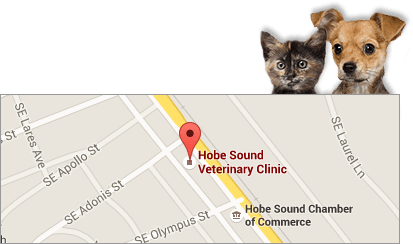The human body cools itself down during hot weather or vigorous exercise using one method: sweating. As the sweat on your skin evaporates, it cools you down. But your dog, of course, is covered in fur. So how do our canine companions’ bodies cool themselves in the summer months?
Panting
Panting is your dog’s primary way of cooling off. When your pup pants, moisture starts to evaporate from their tongue, as well as from the nasal passages and the lining of the lungs. Then, the air produced by panting passes over these moist tissues, effectively lowering your dog’s body temperature. It’s actually very similar to the way sweat evaporates off of our skin to cool us down!
Vasodilation
Have you ever noticed your dog’s face get a bit flushed and wrinkly when they’ve exercised in hot weather? That’s because of something called vasodilation. Vasodilation means that your dog’s blood vessels expand, or dilate. When Fido gets hot, blood vessels around the body expand and bring warm blood closer to the skin’s surface, where it cools down. Then, that cooler blood cycles back to the heart to lower your dog’s internal temperature.
Sweat Glands
Although dogs don’t sweat the way humans do, they do possess sweat glands. In fact, they have two types.
Merocrine glands are located in your dog’s paw pads, and start producing sweat when your dog gets hot in order to cool the body down. If these glands were located around the body, the sweat they produce would simply be absorbed by the fur, rendering it useless—that’s why they’re located in the paw pads.
Apocrine glands are located all over your dog’s body, but they don’t produce sweat in order to regulate body temperature. Instead, they release pheromones that dogs use to identify one another.
Keeping Fido Cool
No matter how your dog keeps himself cool, it’s your job to make sure he doesn’t overheat. Don’t leave your pet outdoors in hot, humid weather for long periods of time —bring him indoors frequently so he can cool off. And make sure that your pooch has plenty of fresh water to drink at all times. Water is essential for cooling the body down and preventing dangerous dehydration in hot weather! For more summertime pet care tips, check out our article on Summertime Pet Care Tips.
Our Advice on How Your Dog Cools Himself Down in 2024
What is the primary method dogs use to cool themselves down?
The primary method dogs use to cool themselves down is through panting. When dogs pant, they evaporate moisture from their tongue, nasal passages, and the lining of their lungs. This process allows the air they exhale to pass over these moist tissues, effectively reducing their body temperature. Panting is a natural and efficient cooling mechanism for dogs, functioning similarly to how humans sweat to cool off but adapted for their furry bodies and unique physiological needs.
What is vasodilation, and how does it cool a dog’s body?
Vasodilation is when a dog’s blood vessels expand or dilate, mainly when the dog is hot or has been exercising in warm weather. This expansion allows warm blood to flow closer to the skin’s surface, where it can cool down by releasing heat into the environment. After cooling, this blood circulates back towards the heart and throughout the body, effectively reducing the dog’s internal temperature. Vasodilation is a critical physiological response that regulates a dog’s body temperature during hot conditions.
Do dogs have sweat glands, and if so, what types do they possess?
Yes, dogs have sweat glands, but they are different from humans and serve various functions. Dogs possess two types of sweat glands: merocrine and apocrine glands. Merocrine glands, found in the paw pads, actively produce sweat to help cool the body down when a dog is hot. This is why you might notice wet paw prints from a dog on a warm day. Apocrine glands, however, are located all over the dog’s body and do not contribute to cooling. Instead, they release pheromones that play a role in social and territorial communication among dogs. For more detailed analysis and understanding of your dog’s health, consider our Veterinary Diagnostics services.
Where are merocrine glands located in dogs, and what is their function?
Merocrine glands in dogs are located in their paw pads. These glands are part of the dog’s cooling system, activated when the dog is hot. Unlike humans, who sweat across much of their skin, dogs primarily release sweat through these paw pads to help regulate their body temperature. The function of the merocrine glands is to produce sweat that evaporates from the surface of the paw pads, providing a cooling effect that helps to reduce the dog’s overall body temperature during hot conditions or vigorous exercise.
Why is it essential to ensure a dog doesn’t overheat during hot weather?
Ensuring a dog doesn’t overheat during hot weather is crucial to prevent heatstroke, a potentially fatal condition. Dogs cool down differently than humans, primarily through panting and limited sweating through their paw pads. Overheating can lead to symptoms such as excessive panting, drooling, lethargy, and even collapse or organ failure in severe cases. By keeping dogs cool, offering plenty of water, and avoiding intense activity in high temperatures, owners can protect their pets from the dangers of heat-related illnesses and ensure their safety and well-being.
Would you like more tips for keeping your dog safe this summer? Give us a call today — we’re here to help.




